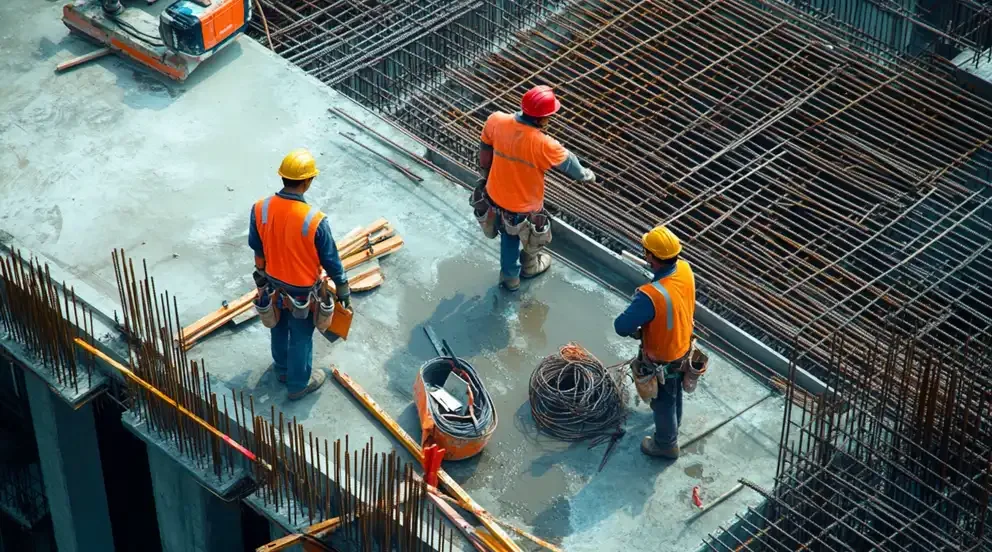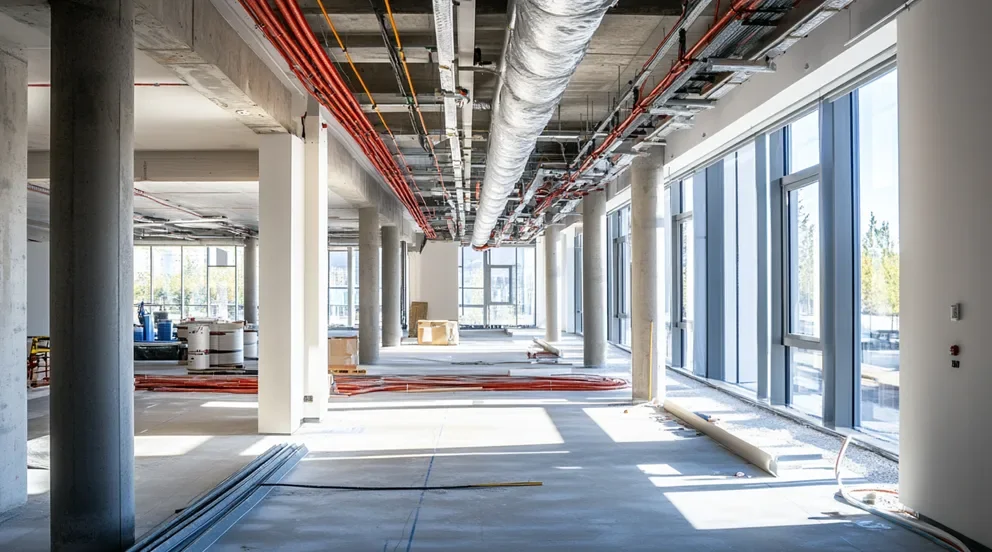A replacement HVAC system refers to the comprehensive set of equipment that is installed to replace an outdated or malfunctioning Heating, Ventilation, and Air Conditioning (HVAC) unit. This can include a myriad of components such as furnaces, air conditioners, heat pumps, ductwork, and other climate control technologies. The intention is to improve the efficiency, reliability, and comfort provided by the system.
These replacements are generally sought after once an existing system reaches the end of its service life, which could be due to age, irreparable damage, or inefficiencies that lead to increased energy consumption and costs. Newer models of HVAC systems are technologically advanced, offering smarter controls and better integration with home automation, thus making them a significant upgrade from older systems.
Investing in a replacement HVAC system is not only about maintaining a comfortable living environment but also about ensuring air quality and cutting down on long-term energy expenditure. Homeowners and building managers usually undertake this substantial investment with the expectation of long-term savings and improved functionality of their climate control infrastructure.
As homeowners approach the inevitable breakdown of their trusty HVAC systems, the decision to invest in a replacement can seem daunting. It’s a process fraught with considerations— energy efficiency, cost, and the quest for upgrading to a better performance model. Initiating the journey into replacing an HVAC system requires balancing the initial investments against the promised long-term benefits.
Today, with the advent of more energy-efficient and technologically integrated HVAC systems, the market offers a multitude of options catered to consumers ranging from budget-friendly models to top-tier, feature-packed systems. Replacing an HVAC system is not merely a switch-out of old equipment but a strategic move aimed at enhancing the comfort and energy profile of one’s home.
This article aims to guide readers through the intricacies of selecting the right replacement HVAC system. It addresses the importance of matching a new system to your specific needs, the potential for energy savings, and how to navigate the technical aspects and financing of what can be a significant home improvement investment.
Assessing the Need for a Replacement HVAC System
When considering whether to replace your HVAC system, reflect on its age and performance. Most systems have lifespans of around 15 to 20 years. If your equipment is approaching or has exceeded this age, its efficiency likely has diminished. Additionally, frequent repairs can be both disruptive and costly. Such expenses over time might justify investing in a new system instead. Pay attention to rising energy bills, uneven heating or cooling, and strange noises, as these can be telltale signs that your current system is losing its efficacy.
Secondly, indoor air quality should not be overlooked. Older systems might struggle to filter out pollen, dust, and other contaminants, potentially affecting residents’ health. A new, modern system could vastly improve air quality. Also, weigh up technological advancements since your last installation. Newer models offer significant improvements in user-friendliness and control, often including programmable thermostats and smart home integration.
Next, assess the reliability of your current setup. Breakdowns during extreme weather can pose not only inconvenience but also safety risks. If reliability is becoming a concern, this might necessitate a replacement. Moreover, consider the refrigerant used by your HVAC system. Older systems that use R-22 refrigerant are being phased out due to environmental regulations, and servicing these units is becoming increasingly expensive and difficult.
Lastly, an assessment by a professional can be invaluable. A certified technician can provide insights into the health of your current system. He or she can identify any inefficiencies or impending failures that may not be apparent to a layperson. With their expertise, you can make an informed decision on whether a replacement would be a cost-effective solution.
Therefore, carrying out a comprehensive assessment is crucial when deliberating over a new HVAC system. Understanding the system’s current state, associated health concerns, technological advancements, and reliability are key factors to consider. Remember, enlisting the help of a professional can lend a critical perspective to this considerable home investment decision.
Understanding the Different Types of HVAC Systems
In exploring HVAC systems, one generally encounters four prominent types. The traditional split system features separate indoor and outdoor units. Typically, it includes a furnace inside and an air conditioner outside, catering to both heating and cooling needs. This setup is commonplace in many homes due to its flexibility in matching various household requirements. Such configurations also allow homeowners to replace only one component should the need arise.
Second, the hybrid system offers a more energy-efficient solution. It operates similarly to the split system but with an added benefit: the ability to switch between gas and electric power. This adaptability can lead to reductions in operating costs and energy consumption. Homeowners can choose the most economic operation mode based on energy prices or weather conditions, potentially leading to significant savings.
Another option is the ductless mini-split system. Perfect for houses lacking ductwork, this category offers individual room control, resulting in tailored comfort levels and reduced energy waste. As each zone or room has its own unit, inhabitants can adjust settings to their preferences without affecting the entire house. These systems are also ideal for new additions or areas where installing ductwork is impractical.
The fourth primary type is the packaged heating and air conditioning system, typically installed outside at ground level or on the roof. These are all-in-one solutions favored in spaces with limited indoor area for system components. Although convenient, these systems might have some trade-offs regarding energy efficiency compared to those that are split.
Understanding the diverse types of HVAC systems is paramount when deciding on the right fit for one’s home. Considerations such as space, energy efficiency, individual room control, and the existing structure of your home all play a role in this decision. With each type offering distinct advantages and challenges, homeowners are advised to weigh their unique needs against what each system can deliver.
Preparing Your Home for HVAC System Installation
Before a new HVAC system graces your home, preparations must be made to ensure a smooth installation process. Initially, you should clear the area around the current HVAC system. This step provides technicians with the necessary space to work and prevents potential damage to your belongings. It also includes ensuring that the attic, basement, or whichever space the system will occupy is accessible.
Furthermore, consider the pathway technicians will take through your home. Removing obstacles can prevent accidents and facilitate a faster installation process. Valuables and fragile items should be safeguarded, as the installation could cause vibrations throughout the house. Prioritizing safety for both the installers and your belongings is crucial.
Next, you might ponder adjustments to your home’s infrastructure. For exemplary instances, if you’re upgrading to a system with different power requirements or a different size, you may need to alter the electrical setup or modify the space to accommodate the new unit. Consulting with your HVAC installer beforehand ensures that any additional home modifications are identified and can be addressed accordingly.
Also, confirm that other relevant systems complement the new HVAC installation. This means checking that your thermostat is compatible or if you need a new one that can handle the modern system’s functions. Similarly, assess your home’s insulation. Adequate insulation will enhance the efficiency of your new HVAC system by helping maintain your home’s temperature.
Finally, once the groundwork is laid, establish clear communication with your technicians. Keeping channels open not preemptively but through the duration of the installation process aids in addressing any concerns immediately. Ensure they understand any specific instructions about your home, and ask them to guide you through the system’s operations and maintenance once installed.
By meticulously preparing your home for a new HVAC installation, you are not just aiding installers but also contributing to the long-term success and efficiency of your system. Prepare the area, safeguard walkways, modify infrastructure if necessary, check related systems, and maintain open communication for a seamless and efficient installation process. Replacement HVAC System
Factors Affecting the Cost of a New HVAC System
The cost of a new HVAC system is influenced by several crucial factors. One of the primary considerations is the size of the system. Generally speaking, the larger the area it needs to service, the more powerful—and consequently, more expensive—the unit will be. Expert installers can conduct load calculations to determine the perfect size, balancing needs against costs.
Material and brand choice can also impact the final price tag. High-quality, well-known brands often come at a premium, but they may offer better warranties and longevity. Bear in mind that the cheapest options might not always be the most cost-effective over the system’s lifetime. Investing in a reputable system could save money on repairs and replacements in the long run.
Installation complexities can also play a role. If your home requires significant modification for the system to be installed, this will add to the cost. Projects demanding new ductwork, extensive electrical work, or other structural changes can see expenses mount. A home evaluation is a fundamental step in deciphering what changes need to be made and what additional costs they may bring.
Additionally, the type of system chosen profoundly affects the overall expense. More advanced, energy-efficient systems might have higher upfront costs but can lead to greater savings through lower operational costs. Considering short-term versus long-term expenses is essential when selecting a system that aligns with your financial plans. Replacement HVAC System
In conclusion, regional labor costs and permits can’t be ignored. Depending on where you live, the cost for professional installation can vary widely. Moreover, some areas require permits or inspections for HVAC installations, which can add to the budget. Taking all these factors into account is necessary when budgeting for a new HVAC system. Size, materials, installation complexities, system type, and regional costs all determine the investment amount for a new HVAC system.
Energy Efficiency Considerations for New HVAC Systems
When evaluating HVAC systems, energy efficiency is a pivotal factor. Systems with high Seasonal Energy Efficiency Ratio (SEER) ratings are usually more efficient, which translates to lower utility bills and environmental benefits. Comparing SEER ratings among different units provides insight into potential energy savings. However, the initial cost tends to be higher for high-efficiency systems, so balance upfront investment against long-term savings.
Additionally, the design of your home influences the efficiency of any new HVAC unit. A home with an open floor plan might require a different system than one with many small rooms. Properly sealing windows and doors, along with sufficient insulation in walls and attics, can drastically improve a system’s performance. Ensure these aspects of your home are optimized to complement the efficiency of your new HVAC system.
The integration of smart thermostats can further harness energy efficiency. These devices can learn your habits and adjust the temperature accordingly, minimizing energy consumption when you’re not home. The capability for remote access also means you can adjust settings when away, offering convenience and potential savings. Implementing such technologies can yield substantial reductions in energy usage.
Consider the overall HVAC system configuration, as well. An HVAC system that’s too large for your home can result in wasted energy, while one that’s too small can struggle to maintain comfortable temperatures. Ensure professional installers perform a thorough analysis to determine the optimal size for your space, considering factors like regional climate, house size, and thermal characteristics. Replacement HVAC System
Lastly, look into government rebates and incentives for energy-efficient HVAC systems. Certain jurisdictions provide financial incentives for homeowners who invest in energy-efficient systems, which can help offset upfront costs. Researching available incentives and understanding how they apply to your situation can make a more efficient system financially attainable.
In conclusion, when considering a new HVAC system, factor in the system’s SEER rating, the design and insulation of your home, smart thermostat integration, proper sizing, and available rebates. The right combination of these elements not only makes your home more comfortable but can lead to less energy consumption, smaller carbon footprint, and savings on your utility bills. Replacement HVAC System



